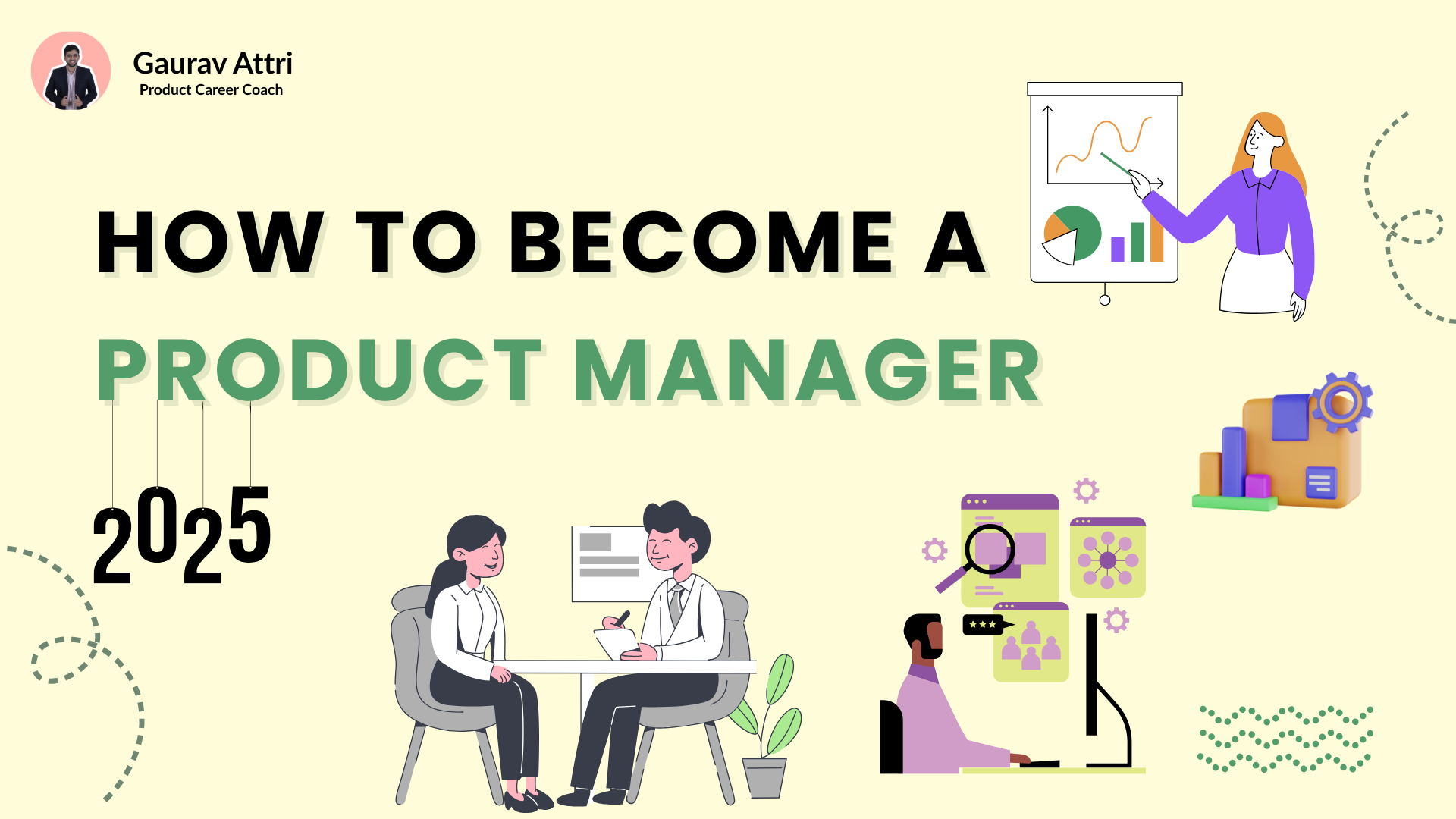
In today’s fast-paced tech world, Product Management is one of the most exciting and in-demand career paths. Whether you’re from a tech, business, or design background, becoming a Product Manager (PM) in 2025 is more accessible than ever—if you have the right strategy.
This guide walks you through the skills, tools, mindset, and career path to become a Product Manager in today’s digital-first world.
📌 Who is a Product Manager?
A Product Manager is the strategic driver behind a product’s development. They define the vision, plan the roadmap, and guide cross-functional teams to deliver value. PMs work closely with engineering, design, and business teams to ensure every product release is aligned with user needs and company goals.
Often called the “CEO of the product”, a PM isn’t necessarily the boss—but they are accountable for the product’s success.
✅ Why Become a Product Manager in 2025?
- 🌐 Booming Tech Industry: The growth of SaaS, mobile apps, AI, and Web3 is creating constant demand for PMs who can lead innovation.
- 💼 High Salaries and Career Growth: Entry-level PM roles pay well, and the path to Senior PM, Group PM, and VP of Product is clear and fast-paced.
- 🧠 Strategic & Creative Role: PMs use data, creativity, and logic every day. You’re constantly solving problems while shaping experiences.
- 📈 Remote & Global Opportunities: Many PM roles are fully remote, making them ideal for international candidates or digital nomads.
- 🤝 Impact-Oriented: PMs influence the success of the business and the happiness of users—often at the same time.
🛠️ Key Skills Needed in 2025
- User-Centric Thinking: Know your users deeply. Learn to conduct interviews, run surveys, and analyze user behavior to solve real problems—not just build features.
- Data-Driven Decision Making: Use data to make smart calls. Familiarize yourself with tools like Google Analytics, Mixpanel, or Amplitude to track user activity and validate decisions.
- Strong Communication: A PM must clearly articulate the product vision to engineers, stakeholders, and designers. This includes writing clear product specs and facilitating effective meetings.
- Technical Literacy: You don’t need to code, but understanding APIs, databases, and architecture basics will help you collaborate with engineers effectively.
- Product Sense: Develop intuition for what makes a good product. Stay curious, observe other apps, analyze UX decisions, and think critically about improvements.
- Agile & Scrum Fundamentals: Most product teams follow agile. Learn how backlogs, sprints, and retrospectives work to run your team smoothly.
🧭 Step-by-Step: How to Become a PM in 2025
- Understand the Role: Read PM blogs, listen to podcasts (like Lenny’s Podcast), and follow product leaders on LinkedIn. Books like Inspired by Marty Cagan are a must-read.
- Build Your Knowledge: Enroll in online courses from Product School, Reforge, Coursera (like Google’s PM Certificate), or LinkedIn Learning to learn the foundations of PM work.
- Master Product Tools: Learn how to use Jira (task tracking), Figma (designs), Miro (whiteboarding), Notion (documentation), and GA4 or Hotjar (analytics).
- Work on Side Projects: Redesign an app, solve a product problem, or write a case study. Share your work publicly—LinkedIn, Medium, or a personal website.
- Build a Network: Join communities like Mind the Product, Product Coalition, or Slack groups. Attend PM meetups and product hackathons.
- Apply Smart: Target APM programs (like Google or Uber) or entry-level roles like Product Analyst. Tailor your resume to highlight product thinking, not just titles.
🔁 Transitioning from Another Career?
- From Tech (Developer, QA): Emphasize your technical background, problem-solving, and collaboration with teams.
- From Marketing or Business: Showcase user empathy, go-to-market knowledge, and how you use metrics to drive growth.
- From Design: Highlight your strong product intuition, understanding of user journeys, and ability to prototype ideas.
💡 Tip: Your past experience is a strength. PMs come from all backgrounds—focus on transferable skills.
📄 Resume & Portfolio Tips
- Show Outcomes, Not Tasks: Write “Launched MVP that improved signups by 40%” instead of “Worked on signup flow.”
- Include Case Studies: Show how you solved a user problem, what you considered, and what tools you used.
- Use a Clean Format: Notion, Webflow, or even a well-designed PDF can become your mini product portfolio.
🚀 Final Thoughts
Becoming a Product Manager in 2025 is less about credentials and more about curiosity, clarity, and user focus. With so many tools and learning paths available online, it’s possible for anyone with grit and passion to break into this field.
Start today: build something, share your ideas, and talk to users. The product world rewards those who take initiative, not just those with experience.






hii